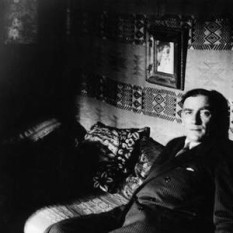Alemdar Sabitovich Karamanov (Алемдар Сабітович Караманов) is a Crimean composer (he wrote the Crimean national anthem) whose prolific symphonism has produced more than 24 symphonies.
Karamanov, son of a Russian mother and Turkish father, was born in Simferopol, inland Crimea, on 10 September 1934. Surviving the German occupation from July 1942 to May 1944, he studied at the Crimean Music College in Simferopol and then at the Moscow State P.I.Tchaikovsky Conservatoire (1953-1958). Here, among contemporaries including Rodion Shchedrin, Edison Denisov, Andrey Volkonsky, Sofia Gubaidulina and Alfred Schnittke, he was a composition student of S. Bogatiryov (1953-58), completing his post-graduate studies under D. Kabalevsky and Tikhon Khrennikov (1958-1964, with interruptions), head of the Composers’ Union. Vladimir Natanson, a disciple of Feinberg, was his piano teacher, Spurning party benefits and the Red Square Establishment, he returned home to Simferopol in the mid-1960s, a gaunt, reclusive figure, urban by night, rural by day, resigned to a struggle for existence, food-parcels, and gifts from well-wishers.
Karamanov aimed at appropriating and managing technical achievements of the Western Avant-Garde and uniting them with the Russian, “Russian Oriental”(with Crimean motives) and Soviet musical traditions.
Much of Karamanov’s music, including the first ten symphonies, dates from his apprenticeship in Khruschev’s Moscow, when his reputation was as a "complicated" pantonal modernist, "with a very sharp ear" and a "bright" intellect. Negative circumstances allied to a pathological reluctance to "write anything down" explain in part why virtually nothing has appeared since the mid-1980s, barring revisions, a couple of film-scores, and the Crimean National Anthem of February 1992. Long forced to imagine his ideas solely in the concert rooms of his mind, Karamanov’s recent claim to be only now conceiving some of his greatest work suggests, however, no lessening of the creative urge. Twenty-four symphonies (1954-83), three ballets (1961-85), seven concertos (piano, violin, trumpet, 1958-68), three string quarters (1953-62), four piano sonatas (1954-61), sundry piano cycles (including nineteen Concert Fugues, 1964), choral settings (1954-74) and songs (to Russian, African and Latin texts, 1963-74) make up the list of his works. .
You can find information through the best music search engine - Muzlan.top 😊All materials on request "Алемдар Сабітович Караманов" are available on page Алемдар Сабітович Караманов
Yes of course. You can listen tracks on the page Алемдар Сабітович Караманов
Yes of course. You can download tracks on the page Алемдар Сабітович Караманов
This page is found by queries: Алемдар Сабітович Караманов songs download, Алемдар Сабітович Караманов remix, Алемдар Сабітович Караманов free download, Алемдар Сабітович Караманов all mp3, Алемдар Сабітович Караманов song download


